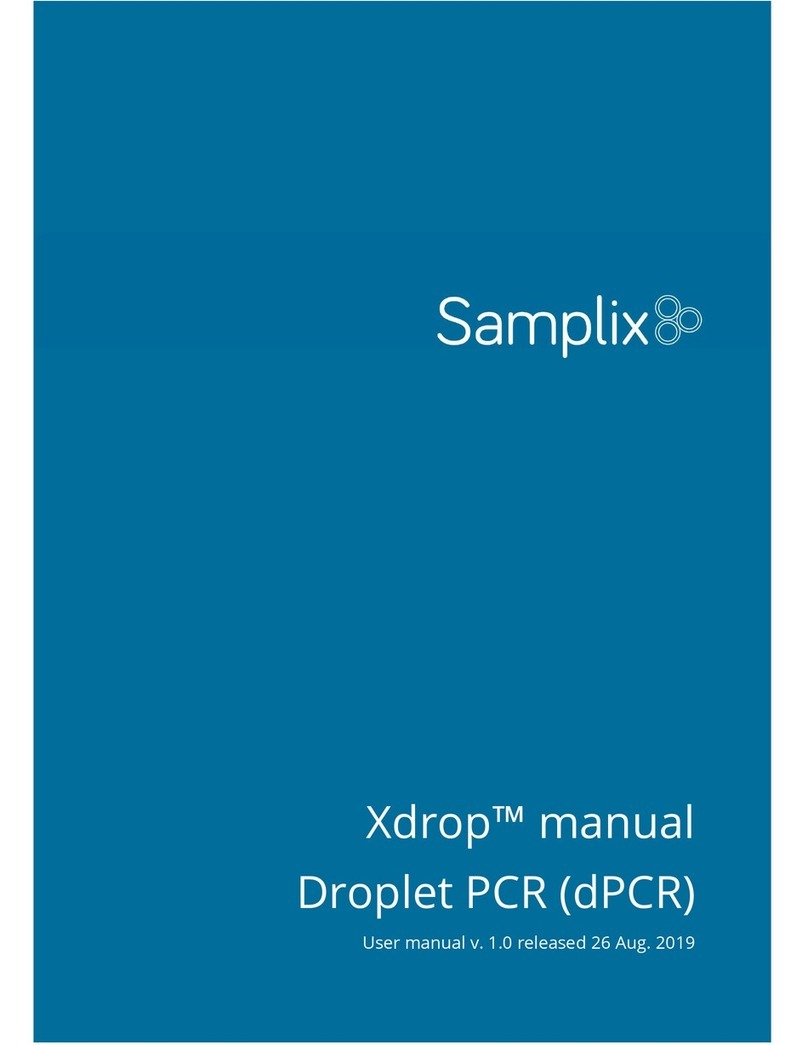
6
Instrument safety warnings
The following warning labels refer directly to the safe use of the droplet generator.
Icon
Meaning
Warning about the risk of harm to body or equipment. Operating the Xdrop™
before reading this manual can constitute a personal injury hazard. Only
qualified laboratory personnel should operate this instrument.
Warning about the risk of harm to body or equipment from electrical shock.
Do not attempt to repair or remove the outer case of this instrument, power
supply, or other accessories. If you open these instruments, you put yourself
at risk for electrical shock and void your warranty. All repairs must be done
by an authorized repair service.
Never remove the outer case of an Xdrop
™
instrument. This may cause
you to receive an electrical shock.
Warning about the risk of harm to hands and fingers. Always keep hands
and fingers away from the instrument when the drawer is in motion.
Intended use and intended users
The Xdrop™ instrument is intended for use by trained laboratory personnel in a clean laboratory environment for DNA
sample preparation from mixed DNA samples using droplet microfluidic technology.
Transportation and storage
Always transport the instrument in the original Samplix box. Before starting up the instrument, let it stay in room
temperature for at least 2 hours.
Maintenance and cleaning
If the instrument is shipped back to Samplix for maintenance, please make sure that the outer surfaces are cleaned
using a cloth and 70 % ethanol.




























